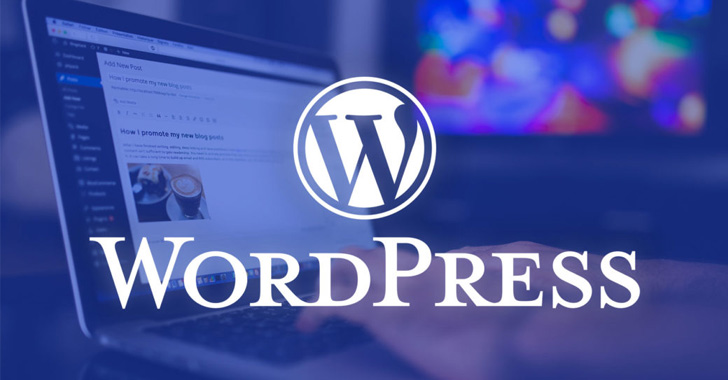Millions of websites are powered by WordPress, one of the most widely used content management systems (CMS) worldwide. Its success is due in part to the ease with which you can alter and customise the look of your website using themes. WordPress themes let you modify your website’s appearance without changing the underlying code or content. In this comprehensive article, we’ll look at a variety of approaches and tricks for personalizing your WordPress theme and giving your website a genuinely distinctive look.
Choosing the Best Theme
Choosing the best theme is the first step in customizing your WordPress theme. Numerous sectors and style preferences are catered to by the hundreds of free and paid themes available. When selecting a theme that complements the goal and identity of your website, consider elements like layout, color scheme, responsiveness, and user feedback.
Using the WordPress Customizer to customize
Designer Grace White says WordPress comes with a built-in tool called the Customizer that enables you to change specific features of your theme in real-time. If you want to use the Customizer, go to “Appearance” in your WordPress dashboard and choose “Customize.” The site title, logo, header image, background color, and other elements can all be modified here. You can examine the alterations before making them permanent thanks to the Customizer’s live preview feature.
Editing CSS Styles
The visual design of your website is controlled by Cascading Style Sheets (CSS). A stylesheet file that lists the default styles is often included with WordPress themes. To further alter the look, change the CSS. You can add custom CSS code using plugins like “Simple Custom CSS” or “Jetpack” if your theme doesn’t already have one built in. As an alternative, you can create a child theme that inherits the parent theme’s styles while letting you override certain styles.
Using Page Builders
Page builders are well-liked WordPress plugins that let you visually create and alter the style of your website. You can add a variety of pre-built components to your sites, including columns, photos, and buttons, using their drag-and-drop interface. Grace White told us that web development and design become easy with the use of page builders like Elementor, Beaver Builder, and Divi, you can develop bespoke page layouts without knowing any code.
Including unique widgets
WordPress themes often have preset widget sections where you can add extra functionality. Small modules known as widgets carry out specialized tasks, such showing recent postings, social network feeds, or a search bar. By including or deleting widgets from these locations, you can modify your theme. For widget management, go to “Appearance” in your WordPress dashboard and choose “Widgets.”
Customizing Theme Functions
PHP functions are used by WordPress themes to regulate a number of different elements of their behaviour. If you know how to program, you can tweak these routines to add or change certain functionality. Directly altering theme files requires care, however, since any errors can render your website unusable. It is recommended to make your updates in a child theme before changing the theme’s core functionality.
Including Custom Post kinds
WordPress comes with post kinds like posts and pages by default. However, if you want to organize and show certain material on your website, you can build custom post kinds. For instance, if you operate a photography website, you can develop a special template for showing “Galleries” and create a new post type for it. It is simple to develop and maintain custom post types without writing any code thanks to plugins like “Custom Post Type UI” and “Toolset Types”.
Mobile optimization
In today’s mobile-centric environment, it is essential to make sure that your website looks amazing and works effectively on smartphones and tablets. This is known as mobile device optimization. The majority of contemporary WordPress themes are responsive, which means that they change their layout and style to accommodate various screen sizes. However, by modifying certain components, you can further adapt your theme for mobile devices. To provide the best readability and user experience on smaller screens, for example, you can alter text sizes, spacing, and picture proportions. Additionally, you can rearrange or conceal certain items for greater mobile usability using the Customizer or CSS media queries.
Customizing Typography
Typography has a big impact on how your website looks and feels as a whole. Thankfully, WordPress makes it simple for you to change the font of your theme. Numerous themes have choices to alter text sizes, styles, and colors. If your theme doesn’t provide these choices, you can add unique typography to your website using plugins like “Easy Google Fonts” or “Custom Fonts.” These plugins interface with well-known font libraries, enabling you to choose from a variety of fonts and apply them to various website components.
Including Custom Backgrounds
A Custom Background can improve the Website’s Visual Appeal and Complement Your Brand Identity. Themes for WordPress often include options to alter the background color or picture. For the backdrop, you can choose a solid color, a gradient, or upload your own picture. Try out several backgrounds to see which one best matches your content and gives your visitors a visually pleasing environment.
Optimising Navigation Menus
Navigation menus are essential for directing users across your website and enhancing usability. An easy-to-use menu editor is provided by WordPress so you can build and adjust several menus. Your menus can be expanded with new pages, articles, categories, or custom links, which you can then organize hierarchically. By employing themes that provide sophisticated menu style options or custom CSS, you can further alter the design of your menus.
Integrating social media
Engaging your audience on social media is essential for advertising your website. Social media icons that you can connect to your social accounts are included in the majority of WordPress themes. By adding social network sharing buttons to your articles or pages, you can further customize your website. Numerous plugins, including “AddToAny” and “Social Warfare,” are readily accessible and provide adaptable social sharing options, making it simple for users to share your material with their networks.
Final words
Now you have a clear idea on how to customize your WordPress website. Follow these tips and you will end up with having a unique and one of a kind website with ease.








